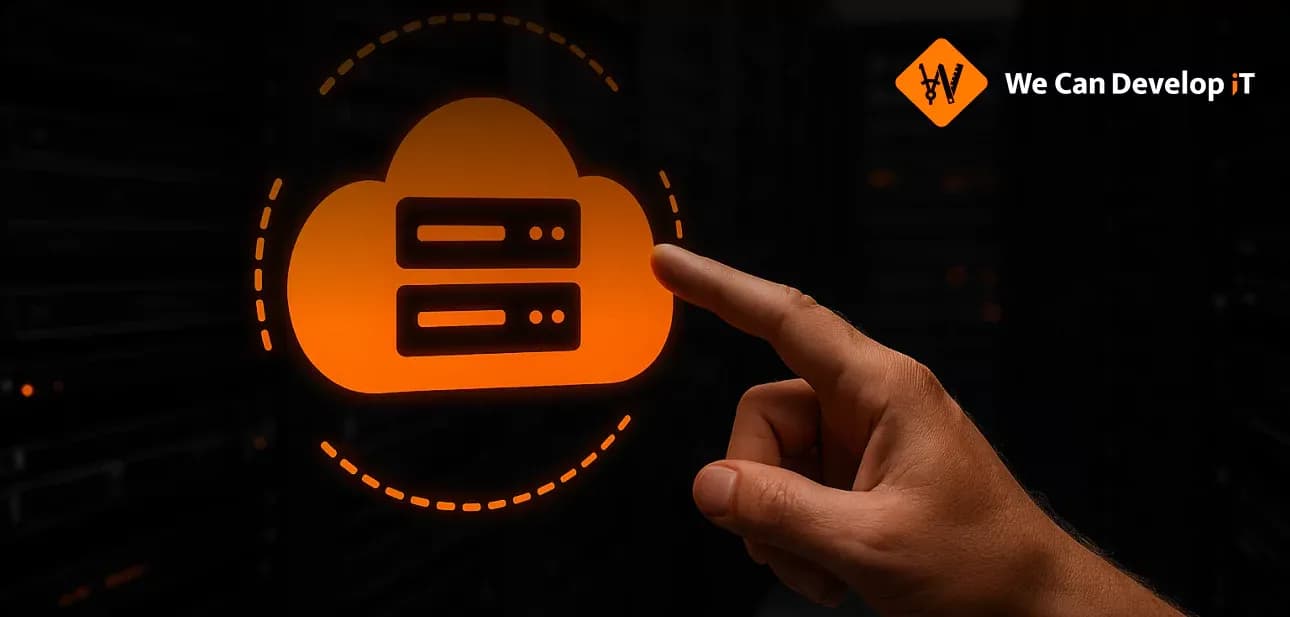Back
Updated at: October 11, 2025
Serverless computing and FaaS in 2025: from experiments to the standard of enterprise clouds

In 2022, the fintech giant Capital One completed an ambitious three-year project to fully transition to a serverless architecture. Result: The speed of new product launches decreased from 6 months to 6 weeks, infrastructure costs were reduced by 45%, and scaling during peak periods became automatic. Moreover, the company was able to reallocate 30% of its IT budget from infrastructure support to innovation.
This example inspired many - and by 2025, serverless ceased to be an "experiment for enthusiasts" and became a mature technology on which critical systems are built. The Function-as-a-Service (FaaS) model has confidently entered the mainstream: over 70% of organizations in Europe and the USA are already using it for automation, scaling, and integration with advanced IT directions - from edge computing to artificial intelligence. And if in 2024 the global market was estimated at $21.84 billion, by 2030 it will grow almost threefold - to $60.93 billion with a CAGR of 18.4%.
Market: different speeds - a single trend
Europe: Growth with an Eye on Data Sovereignty
In 2024, the European serverless market volume will reach $6.4 billion, and by 2030 it will grow to $13.3 billion. Germany leads in the pace of adoption, followed by the United Kingdom and France. Here, there is a particular focus on GDPR and data localization. Companies are increasingly choosing European providers like Scaleway to minimize the risks of dependence on AWS, Azure, and Google Cloud Platform (GCP). The European Commission supports projects like COGNIT, which develop cognitive serverless frameworks for edge computing.
USA: Scale and Speed of Innovations
The American market is growing faster - 24.9% per year. Here, serverless is already implemented at the level of national corporations. Capital One is just one example. The key feature is the multi-account strategy: each team works in a separate AWS account, enhancing security and scalability, unlike the centralized approach popular in Europe.
Technologies and practices of 2025
The serverless ecosystem has noticeably matured, and implementation practices have become standardized.
Cold start - a solved problem
- Function warming: automatic calls to key functions on a schedule;
- Code optimization: minimizing dependencies and using faster languages (example - AWS SnapStart for Java);
- Provisioned concurrency: instant response for mission-critical applications.
Architectural principles
- Memory optimization: tools like AWS Lambda Power Tuner help reduce costs by 40-60%;
- Stateless design: storing state in external services (DynamoDB, Redis, S3);
- Principle of least privilege: each function has only the necessary IAM permissions.
Automation of management
- Integration of CI/CD with function deployment;
- Automated testing and security scanning before publication;
- Orchestration thru Step Functions and EventBridge for building complex function chains.
Observability and Control
- Using OpenTelemetry for cross-platform monitoring;
- Metrics such as cold start, memory utilization, and execution duration are essential parts of dashboards.
Platforms: who has what strengths
Comparison of leading platforms:
|
Platform |
Cold Start Time |
Hybrid Scenarios |
ML Integration |
Ecosystem |
Features |
|
<1s for most languages |
Medium |
Very broad |
Lambda Layers, Step Functions, custom runtimes | ||
|
2-3s |
Full (Cloud + Kubernetes) |
Medium |
Broad |
Long runtime (20–30 min) | |
|
~1s |
Limited |
Best in class |
Medium |
High network performance, integration with Vertex AI |
Highlighted by leadership:
- AWS Lambda - leader in maturity and ecosystem.
- Azure Functions - best choice for hybrid scenarios.
- Google Cloud Functions - top choice for ML and high-performance networking.
Industries where serverless is already changing the game
Fintech
Serverless provides banks and fintech startups with instant scaling during peak periods (Black Friday, month-end closing) and savings of up to 60% on infrastructure costs. Capital One manages thousands of Lambda functions thru its own centers of excellence, while European banks use the technology for the rapid launch of new products. Plus, a multi-layered protection system including: end-to-end encryption, compliance with PCI DSS, GDPR, the use of API Gateway, and WAF.
IoT and Industry
With the number of IoT devices expected to reach 40 billion by 2030, the load on infrastructure is increasing exponentially. Serverless allows for the processing of unpredictable data streams and integrates with edge computing for predictive maintenance, real-time analytics, and smart city management.
Data analytics
Serverless platforms like Lambda provide a multiple increase in performance and a reduction in the cost of analytics compared to Query-as-a-Service solutions. Automatic scaling allows processing millions of events per second without complex infrastructure setup.
Innovations and the future of serverless
Today, serverless is integrating with the most advanced technologies:
- AI/ML: serverless is increasingly used for ML inference, reducing AI energy consumption thanks to the pay-per-execution model;
- Edge computing: Lambda@Edge, Azure IoT Edge, and Cloudflare Workers minimize latency for gaming, AR/VR, and autonomous transportation;
- Multi-cloud and hybrid: OpenFaaS, Knative, and Serverless Framework reduce vendor lock-in risks and run functions in hybrid environments, abstracting from specific providers.
Tomorrow:
- Serverless-first architectures will become the standard for event-driven, function-based applications;
- Practical integrations with quantum computing for cryptography and optimization tasks will begin;
- The concept of Sustainable computing will make serverless a part of "green" IT initiatives that reduce the carbon footprint.
Challenges and Solutions
Observability and monitoring. Monitoring serverless applications requires specialized tools:
- Use distributed tracing: AWS X-Ray, Datadog, New Relic provide request tracing across multiple functions.
- Implement OpenTelemetry as the standard for vendor-agnostic instrumentation;
- Set up real-time monitoring for increased cold start time, memory usage, execution time (Prometheus, Grafana, CloudWatch).
Security and compliance. The distributed serverless architecture dictates such approaches to security:
- Zero Trust - each function undergoes independent authentication and authorization;
- IAM principle of least privilege;
- Runtime security - monitoring anomalies and attacks in real time.
Costs: cost efficiency will only manifest with the proper system configuration. This is facilitated by:
- Implementation of automatic alerts for spending spikes;
- Using Lambda Power Tuner to optimize performance/cost;
- Planning architecture updates taking into account new rates (for example, AWS charges for cold start starting August 2025).
Conclusion
Serverless in 2025 is not just a convenient way to run code, but a strategic architecture that provides businesses with speed, flexibility, and cost savings. It frees teams from infrastructure concerns and allows them to focus on creating value for customers.
If you haven't started your journey to serverless yet, now is the time. We at We Can Develop IT will help you assess the potential benefits, build the architecture, and implement it seamlessly, so that you can start working in the future that many will only experience in a few years.
Summary:
Serverless computing and Function-as-a-Service (FaaS) have evolved into essential components of enterprise cloud strategies, moving from initial experimentation to widespread adoption. Many organizations now leverage this technology to automate processes, scale efficiently, and integrate innovative IT solutions. A notable example is Capital One, which transitioned entirely to a serverless architecture, significantly accelerating product launches and reducing infrastructure costs. In Europe, the serverless market is notably influenced by data sovereignty concerns, with companies increasingly opting for local providers to comply with regulations. Conversely, the American market is characterized by rapid growth and the implementation of serverless solutions at the corporate level, emphasizing a decentralized security approach. As the serverless ecosystem matures, standard practices have emerged, including improvements in cold start times and memory optimization. Leading platforms such as AWS Lambda, Azure Functions, and Google Cloud Functions have distinct strengths catering to various industry needs. Industries like fintech, IoT, and data analytics are experiencing transformative benefits from serverless technologies, including cost savings and enhanced scalability. Looking ahead, serverless architectures are expected to integrate further with emerging technologies, paving the way for sustainable computing and advanced applications. As organizations seek to leverage these developments, addressing challenges such as observability, security, and cost management will be crucial for successful implementation.
Read also:
serverlesscomputing
FaaS
FunctionasaService
serverless2025
enterpriseclouds
CapitalOne
cloudarchitecture
cloudmigration
fintech
cloudcostoptimization
cloudscaling
GDPR
dataprivacy
Scaleway
AWSLambda
AzureFunctions
GoogleCloudFunctions
cloudsecurity
cloudautomation
edgecomputing
AI
ML
infrastructurecosts
cloudscalability
cloudintegration
hybridcloud
multicloud
OpenFaaS
Knative
ServerlessFramework
IoT
datastreamprocessing
realtimeanalytics
smartcity
quantumcomputing
greenIT
cloudobservability
OpenTelemetry
distributedtracing
cloudmonitoring
cloudcompliance
ZeroTrust
cloudcostmanagement




